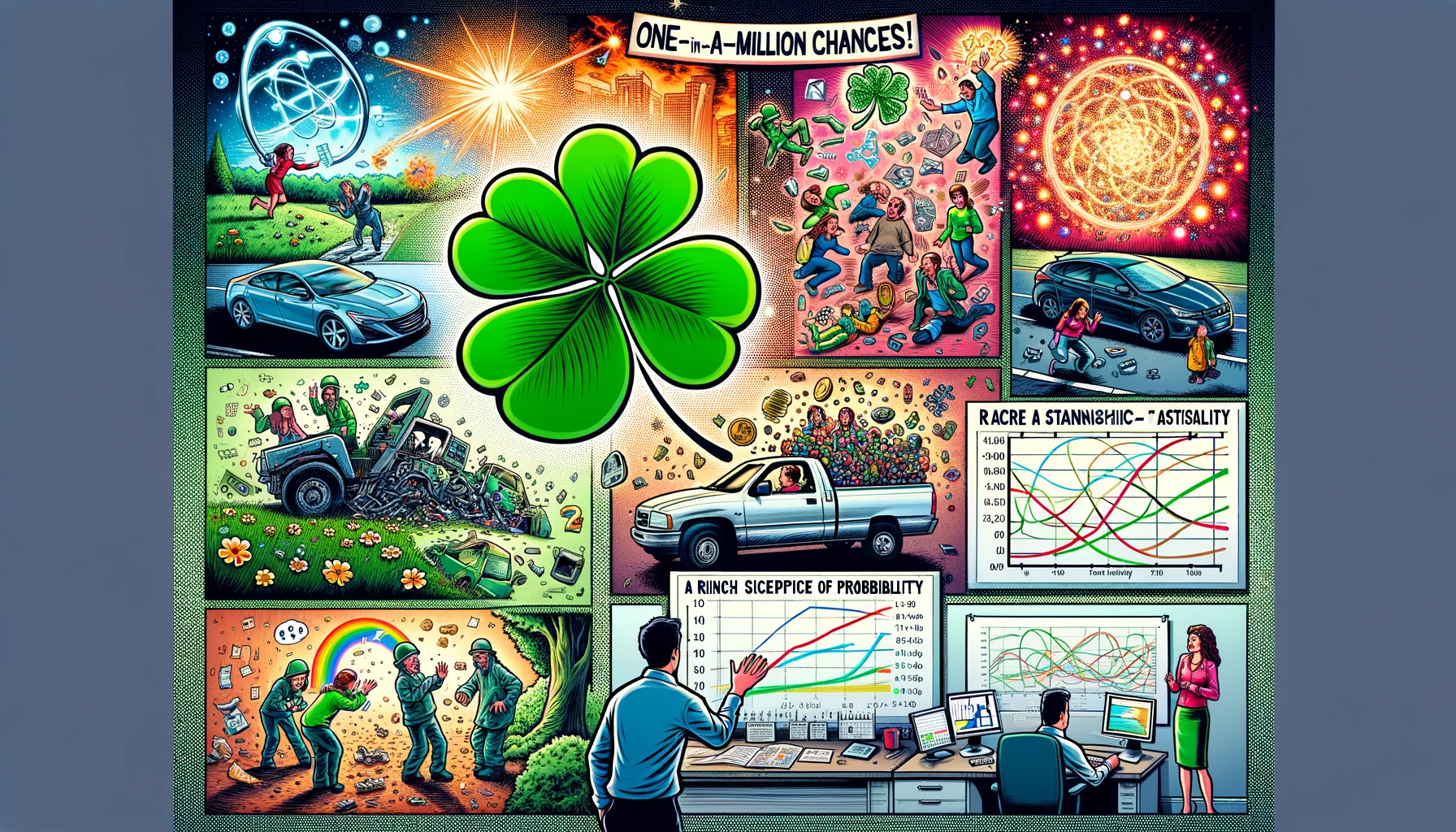Defying Odds: Unraveling the Mystique of One-in-a-Million Chances

n the intricate tapestry of life, the phrase “one in a million” often sparks a sense of wonder, suggesting events so rare and extraordinary that they border on the miraculous. Yet, the true essence of what constitutes such a rarity remains shrouded in a mix of myth and science. This article delves deep into the world of these improbable occurrences, exploring both personal anecdotes and statistical analyses to uncover what truly deserves the label of a one-in-a-million chance.
The discussion from Hacker News provides an intriguing gateway into the human fascination with rarity. Here, we find a colorful mosaic of personal stories, each narrating events that seem to defy logic and probability. From serendipitous encounters to hair-raising near-misses, these accounts are testaments to the extraordinary moments that life occasionally presents.
One user shares a tale of meeting a stranger in a foreign country, only to discover a shared hometown and mutual acquaintances. Another recounts a story of narrowly escaping a major accident, attributing their survival to sheer luck. These stories, rich with personal significance, often become emblematic of the one-in-a-million concept. However, they also highlight a common human tendency: to ascribe extraordinary significance to rare events, often overlooking the role of chance and coincidence.
Contrasting the anecdotal is the perspective offered by a UC Berkeley statistician. This approach demystifies the concept of one-in-a-million odds through the rigorous lens of statistical analysis. Here, the focus shifts from the extraordinary to the everyday, evaluating common occurrences and their likelihood with scientific precision.
For instance, the statistician explores the probability of medical anomalies or the likelihood of natural disasters occurring. This analysis provides a grounding effect, contextualizing what we perceive as rare against the backdrop of everyday probabilities. It becomes clear that many events we deem as one-in-a-million may actually occur more frequently, or conversely, some presumed common events may be rarer than we think.
This exploration into the one-in-a-million phenomenon underscores a fascinating intersection between human perception and statistical reality. It reveals how our interpretations of rarity are often colored by personal experiences and emotional resonance, deviating from the mathematical probabilities that govern the world.
The contrast between the anecdotal narratives from Hacker News and the statistical breakdown from the Berkeley statistician paints a comprehensive picture of our understanding of rarity. It emphasizes the need for a balanced view that appreciates the wonder of rare occurrences without losing sight of their actual likelihood.
In the end, the journey through the world of one-in-a-million chances is as much about understanding probabilities as it is about recognizing the human penchant for finding meaning in rarity. Whether viewed through the lens of personal experience or statistical analysis, these rare events continue to fascinate and inspire, reminding us of the endless possibilities that life offers.
